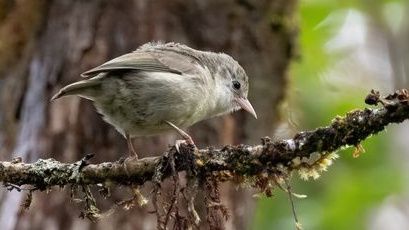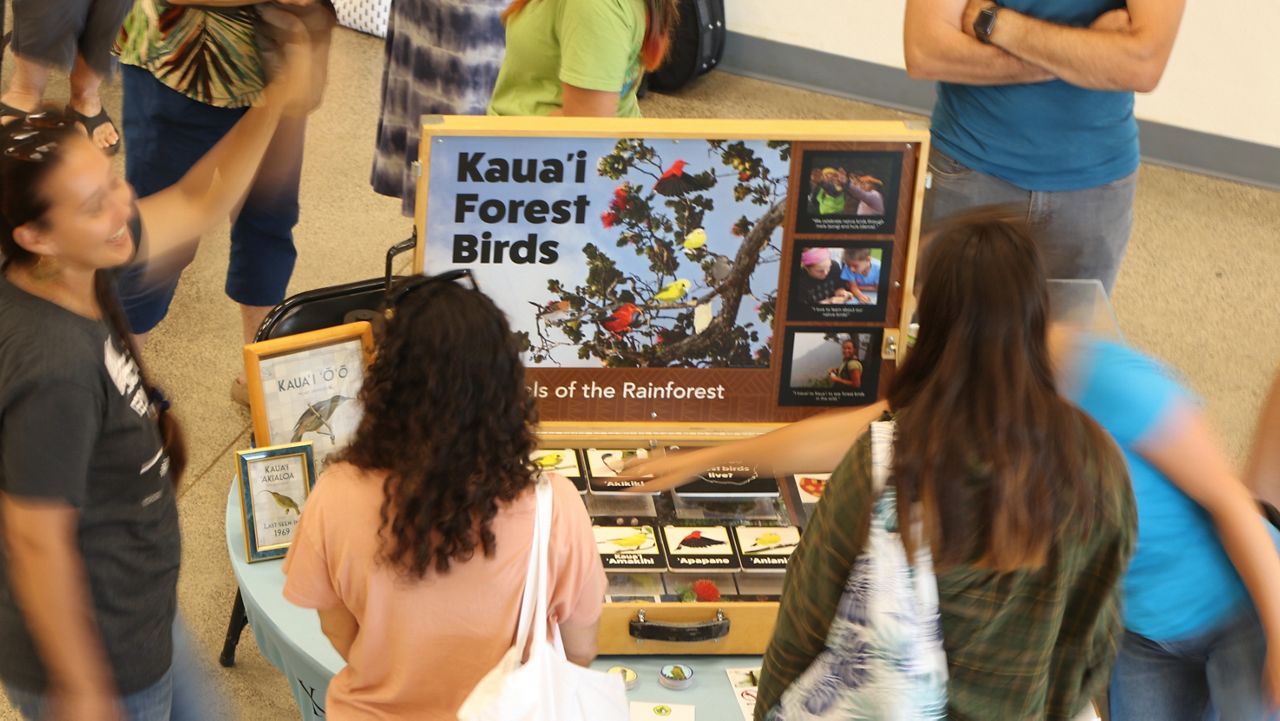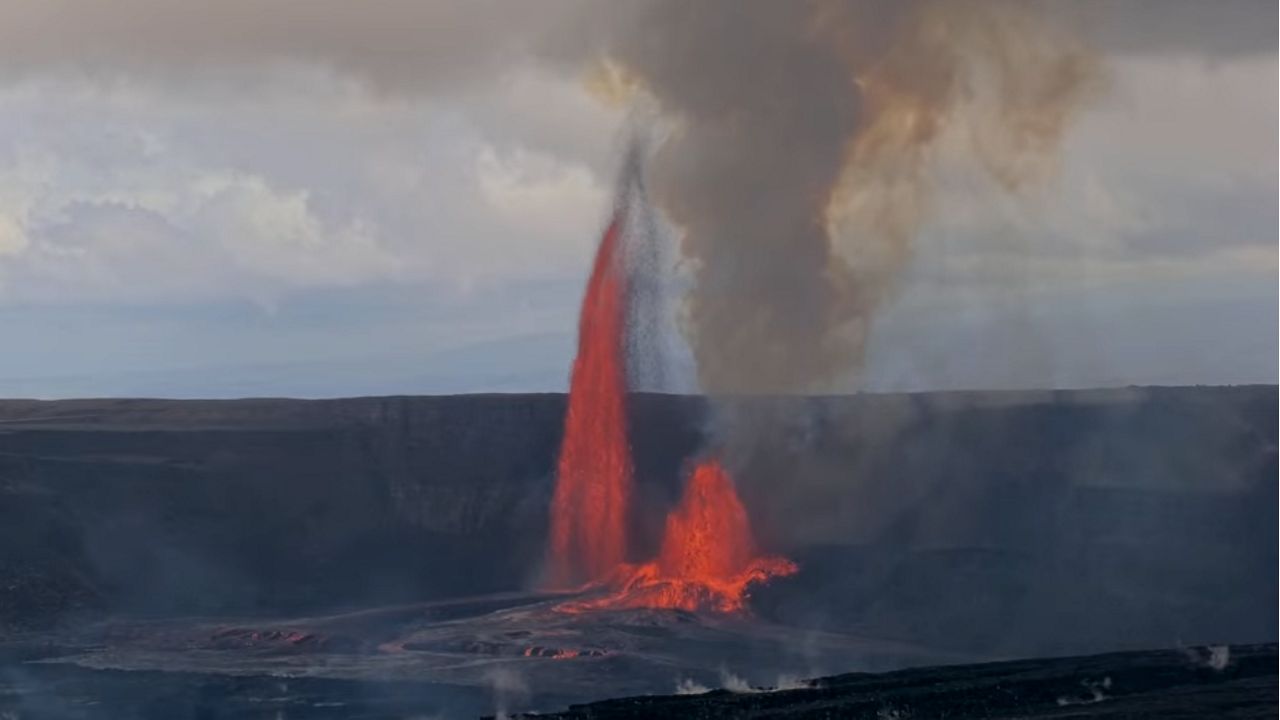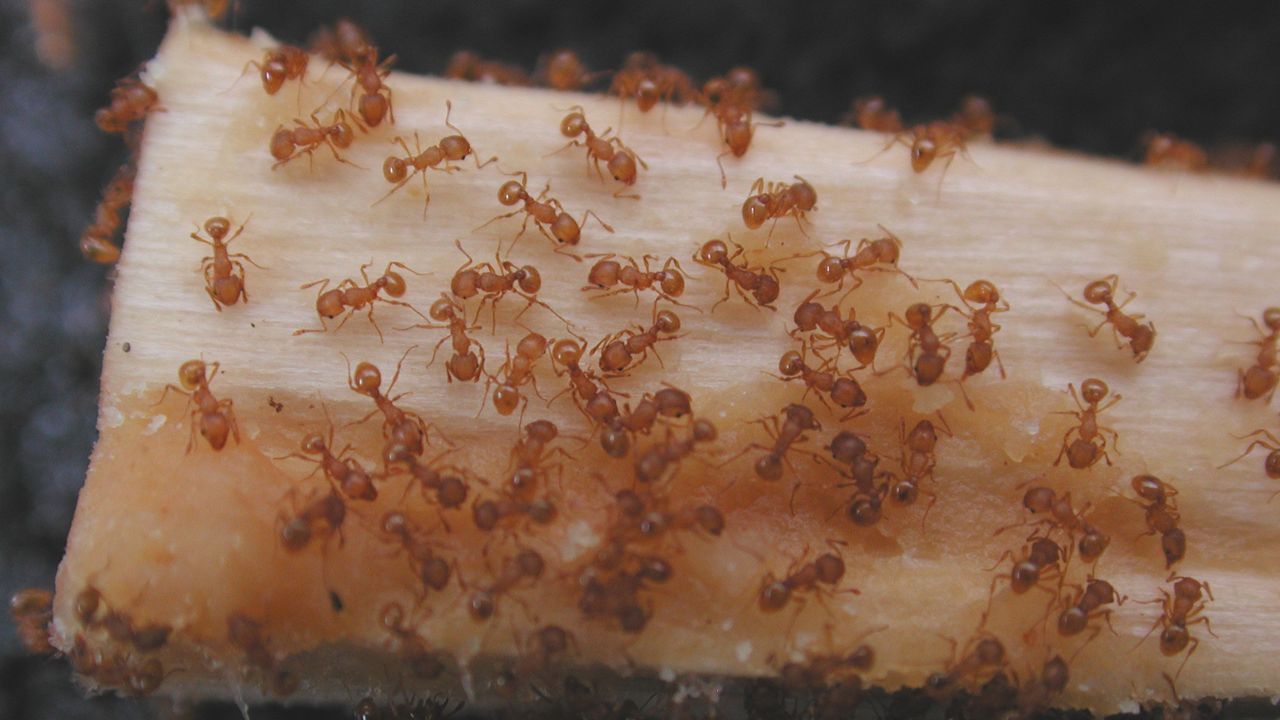Only five ʻakikiki birds are left in the wild on Kauai. ʻAkikiki are one of three native Hawaiian honeycreeper species that may go extinct in the wild within the next few months.
Justin Hite, the Kauai Forest Bird Recovery Project’s field supervisor, made the dire announcement during a community meeting on Tuesday, according to a Department of Land and Natural Resources news release.
“We have suspended any attempts at bringing the last five of these birds into safety, as they are molting currently and capturing them is too stressful and would likely lead to their demise,” Hite said.
ʻAkikiki, along with ‘akeke‘e on Kauai and kiwikiu, on Maui are predicted to go extinct within months due to the threat of avian malaria. Climate change has been expanding the range of mosquitos into the high-elevation forests where these birds live. A single mosquito bite can transmit avian malaria to native birds and kill them.
The Kauai Forest Bird Recovery Project previously brought in 12 unhatched eggs from the wild; in captivity, 11 of them successfully hatched. These chicks join 40 other ʻakikiki that are in conservation centers on Kauai and Maui, where they will remain until the threat of avian malaria is eliminated in the wild.

During Tuesday’s community meeting, Division of Forestry and Wildlife Administrator David Smith described the three species of native birds as “falling out of the sky.” He promoted the use of a wide-scale mosquito suppression technique that would stop the spread of avian malaria. The technique incorporates a naturally occurring bacteria called Wolbachia. Male mosquitoes carrying the Wolbachia bacteria are released into forests and mate with female mosquitoes, who lay eggs that do not hatch. Only female mosquitoes bite, so the male mosquitoes don’t spread avian malaria.
“Mosquitos aren’t native here. They don’t provide any crucial ecological role. By suppressing mosquitos, we have a huge environmental positive upside and almost no downside. It’s essentially environmentally benign. In fact, it could help human health issues as well,” said Smith.
He also emphasized that the mosquito suppression technique has been used around the world, including in Australia, Mexico, Thailand, French Polynesia, California, and other locations.
Last month, the U.S. Fish and Wildlife and Hawaii DLNR released a Draft Environmental Assessment on the technique for Kauai, which is available for public comment until July 24. On Maui, the Final Environmental Assessment was approved in March and small-scale pilot releases of Wolbachia-infected mosquitoes are currently taking place on East Maui.
Community members who opposed the mosquito suppression technique are currently seeking a preliminary injunction and temporary restraining order to halt the effort on East Maui. A hearing is scheduled on July 21 in the Oahu Circuit Court.
Michelle Broder Van Dyke covers the Hawaiian Islands for Spectrum News Hawaii. Email her at michelle.brodervandyke@charter.com.








